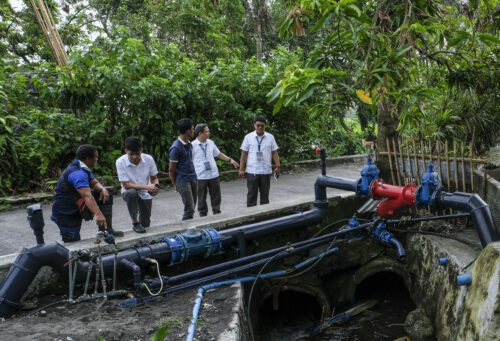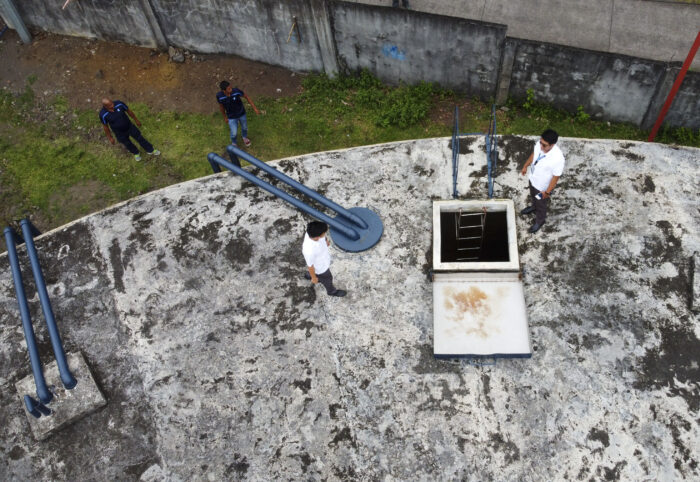Sustainable water services amid disasters in Philippines

Legazpi City in Albay province, Philippines, is a popular tourist destination with its proximity to the Philippines’ most famous active volcano, the perfect cone of Mount Mayon. It is located on the Eastern coast of the country, which makes it vulnerable to typhoons and sea level rise, in addition to volcanic eruptions.
To improve the city’s resilience against these disasters, the city government has put in place a disaster risk reduction and climate change adaptation strategy to protect the lives of more than 200,000 residents.
Legazpi is recognized by the National Disaster Risk Reduction Management Council as a model city in implementing risk reduction management practices in the country.
With a keen sense of accountability, stakeholders of Legazpi did not stop at protecting the lives of people -they also sought to protect one of the city’s most valuable resource: water.
“Typhoons can damage our facilities which can cause temporary water interruption,” said Richard Atun, head of the Customer Accounts Division of the Legazpi City Water District (LCWD).
The LCWD currently provides a consistent and clean water supply to 55 out of 70 barangays in Legazpi City.
“Before, we did not have documented plans and protocols, so repairs and recovery took some time,” he added.

Last year, USAID started assisting the Legazpi City Water District with business impact assessment and business continuity planning. The LCWD created a Business Continuity Plan (BCP) Team to complete and implement the Business Continuity Plan and designated Richard as the team leader. The BCP Team gained knowledge and skills in planning, analytical risk assessment, and resource mobilization for emergency response and recovery. As part of the Business Continuity Plan, Richard and his team created an action plan specific to flooding, strong winds, and lahar flow. These three hazards pose the highest risk to the LCWD.
“The action plan clearly describes the roles and responsibilities of each team member in preparing and responding to an emergency”, said Richard. “We are more confident and resilient now because of the many things we’ve learned from our BCP sessions from USAID”, he added.
In December 2019, powerful winds and intense rains brought about by Typhoon Tisoy (international name “Kammuri”) rammed into Legazpi City, flooding the area around the LCWD Office and cutting some of the transmission lines between LCWD generators and water facilities.
This temporarily stopped water operations in some areas, but the BCP Team initiated the action plan and was able to restore water services within 24 hours after the typhoon.
Updating the Business Continuity Plan is a continuous process for Richard’s team and so the experiences and lessons learned from responding to Typhoon Tisoy were incorporated in the plan.
“We will continue to create action plans for other hazards such as earthquake and volcanic eruption,” said Richard.
“The Business Continuity Plan is a vital document to ensure continuity of water services in the event of emergencies and disasters,” said James Esplana, General Manager of LCWD.
Apart from business continuity planning, USAID also trained the LCWD in water safety planning to advance water security and ensure access to a sustainable water supply.
“I am very thankful to USAID for the support it has provided to the LCWD. With these additional skills, we are able to fulfill our mission of providing safe, reliable, affordable, and sustainable water services while promoting customer service excellence, employee development, and environmental preservation,” said Mr. Esplana.

